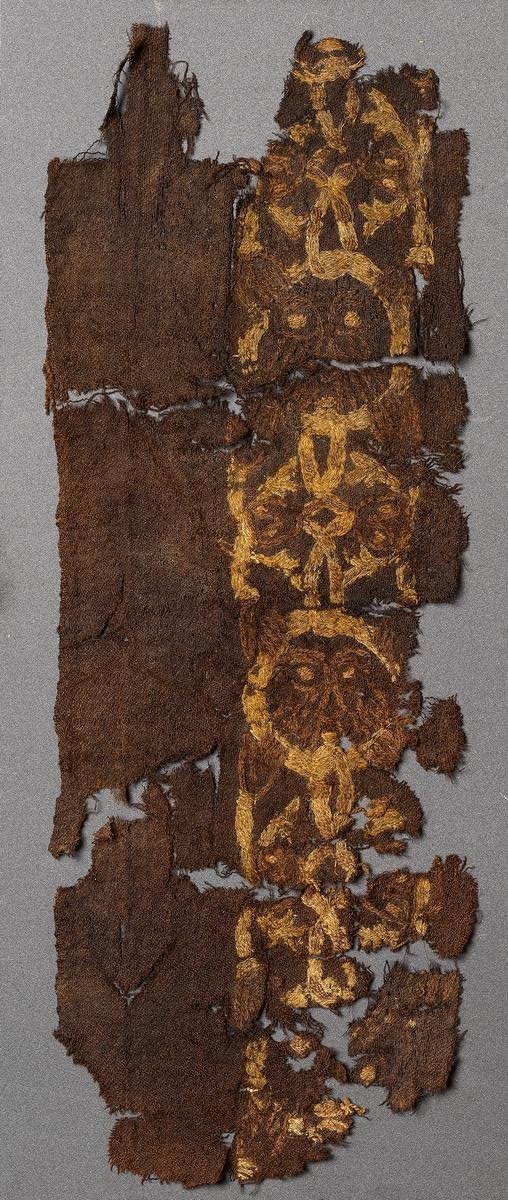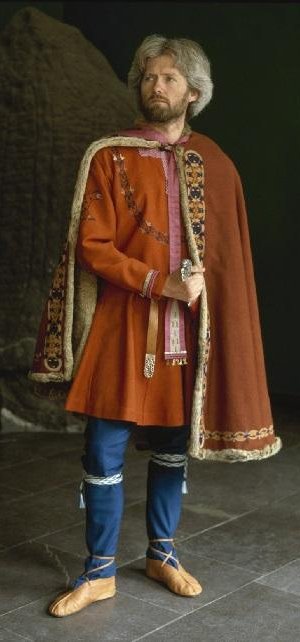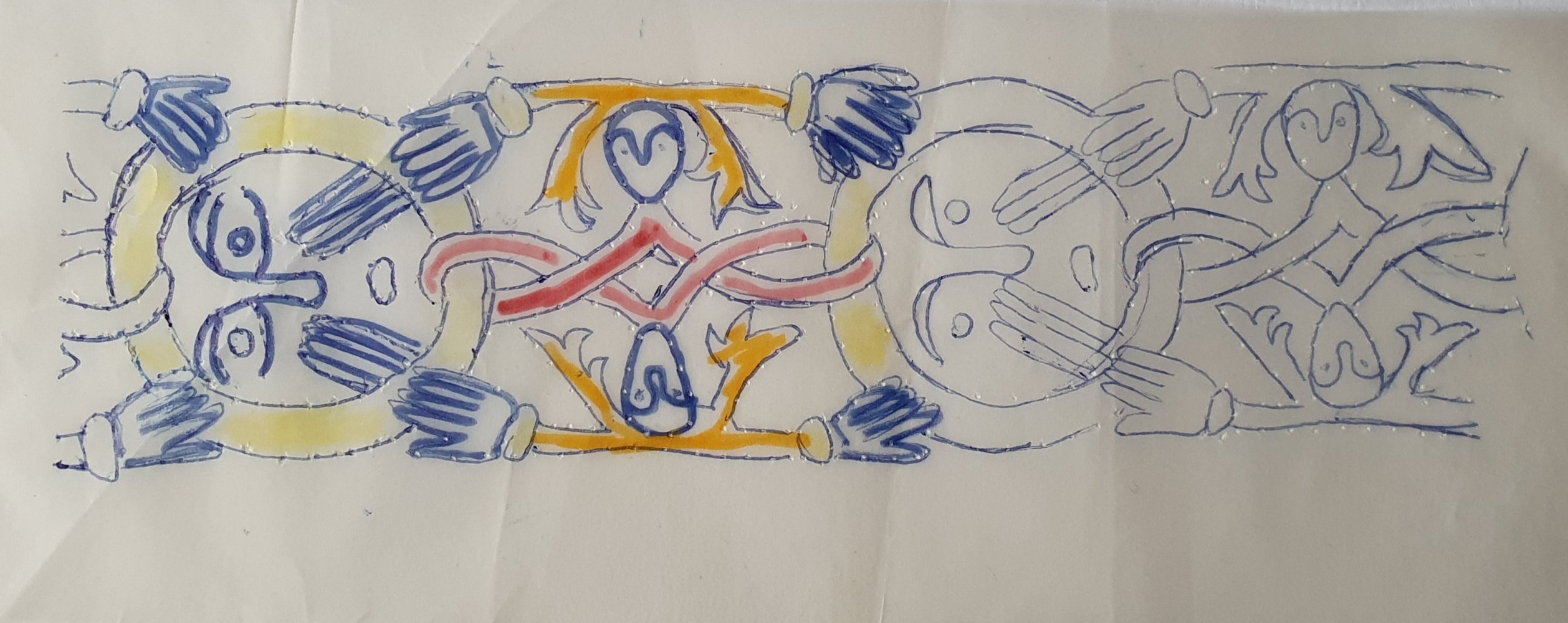A pair of cuffs worked in Norse style embroidery, based on the Mammen textiles.
These cuffs were my first attempt at woolwork – indeed, my first non-counted embroidery. I worked the cuffs as a gift for Alfar, to go with his Viking wardrobe.

Research and Design
The design is taken from the embroidered band on the front of a cloak found at Mammen, Denmark, one of the few textile finds from this period. The National Museum of Denmark hold both the extant embroidery and a reproduction of the cloak, along with other clothing. The grave is dated to 970 AD.

Source: Nationalmuseet

Source: Nationalmuseet
Thora Sharptooth gives an outline version of the design in her article on Viking Embroidery. I used a combination of her interpretation together with the images from the original textile and the museum reproduction to arrive at my adaptation of the design for use as sleeve bands.
The original piece was embroidered in wool floss onto a silk twill band, which was applied to the edge of the cloak. This use of applied bands was common practice, with examples found on ground fabrics of silk or wool.
The original piece has faded to a series of browns, but it is clear that several different colours were employed. Some of the colours have been surmised through chemical analysis of the wool floss. Thora Sharptooth notes that colours used by the Vikings include woad blue, madder red, lichen purple, and an unidentified yellow, as well as walnut shell brown, and walnut+iron black..
Construction
I followed the colours adopted by the museum reconstruction, as these seem appropriate and show up well on the deep red wool ground. Red was a favourite colour amongst the Vikings and although this is deeper than the more common crimson, it is a lovely rich colour that I had on hand in my scrap box.

The western-influenced style might have been learned from the Anglo-Saxons. Common stitched included stemstitch, couching, chain stitch, and raised herringbone stitch (Thora Sharptooth 1997) – well suited to working in wool, and still is use today.
I used the prick and pounce method to transfer the design to the wool, then drew over the lines with a fine waterproof pen. I worked the embroidery in 2 ply wool (Appleton and Flower wools) using stem stitch and chain stitch, in a range of ochre and rust shades, plus a deep blue and off white. I worked it in the hand, not a frame.
I was pleased with the piece. It was a chance to try a new style of embroidery and work in a very different colour range to my usual 16th century German milieu. I learned that wool responds very differently to silk and requires a looser tension. Luckily, wool also responds well to steam and a final pressing resulted in a very even piece.

